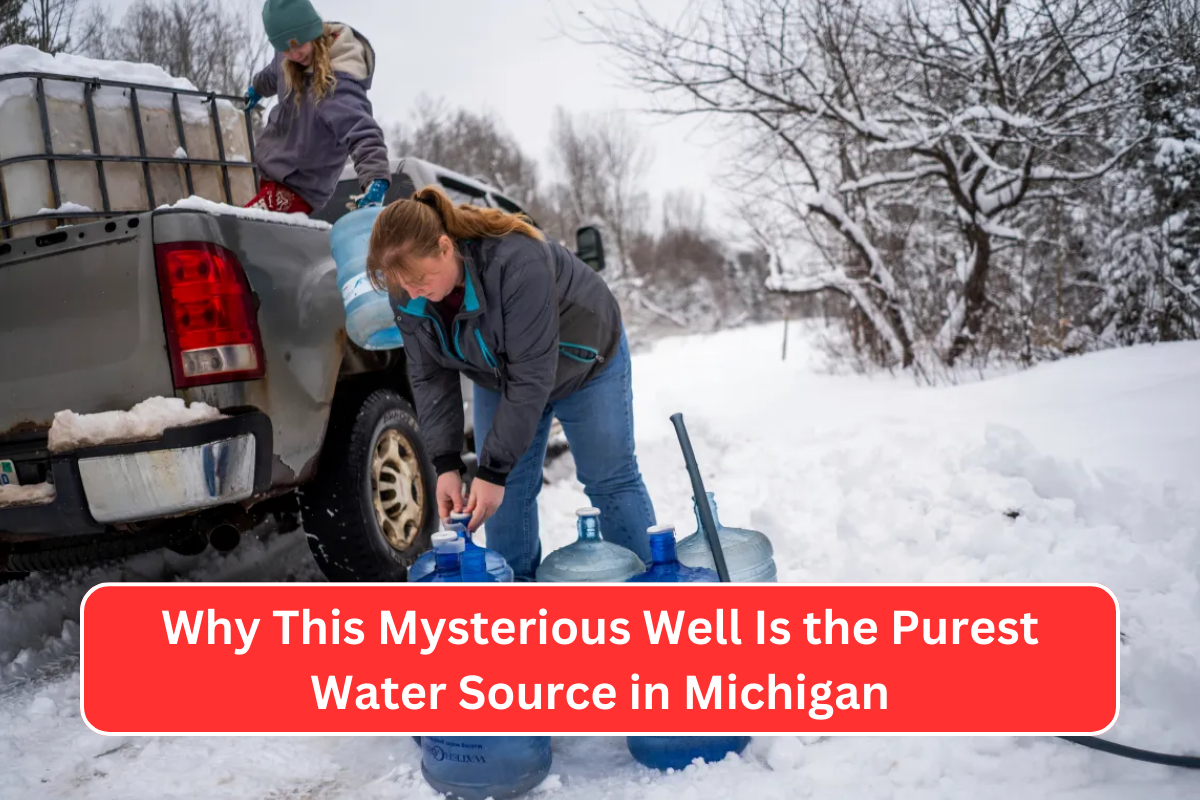Deep in the woods of the Upper Peninsula, a mysterious water hose has sparked a conflict between locals and the state. Hidden for generations, this hose leaks crystal-clear water, which many claim is the purest they’ve ever tasted. While locals cherish this natural water source, state authorities believe it’s unsafe and must be regulated or shut down.
The Hidden Well: A Local Treasure
The water hose is located in Lake Mine, a ghost town in Michigan’s Greenland Township. This small, secret well has been a part of local life for over 100 years. The water flows from an underground aquifer, and people have been quietly using it for drinking and farming.
Ron Store, a local commissioner, says the water stays fresh for weeks and doesn’t turn green, a sign of its purity. Residents, farmers, and hunters rely on this free-flowing well because their own water sources are less reliable.
Discovery and State Intervention
The well was hidden until workers accidentally damaged a pipe while maintaining the Bill Nicholls Trail, which runs through the area. This revealed the water source to state officials. The Michigan Department of Environment, Great Lakes, and Energy (EGLE) inspected the well and raised concerns about its safety, citing the old, unregulated pipes.
EGLE issued an order to shut down the well, sparking outrage among locals who argued the water had never caused harm. Many saw the state’s intervention as unnecessary interference.
Why Is This Water So Special?
The well’s water comes from deep underground and might be pre-glacial, untouched by modern contamination. Residents believe the water is purer than their local wells, some of which have issues like uranium contamination.
Local legends suggest the well was built during the town’s copper mining days in the 1800s, serving both residents and trains. Though the mine and town are long gone, the well remains an essential resource for the community.
The Fight to Save the Well
Locals, led by Ron Store, launched a campaign to save the water source. Residents contacted officials, shared historical records, and conducted water tests to prove its safety. They even protested with warnings that shutting down the well could lead to conflict.
To avoid further tension, the state decided to help the community. The Department of Natural Resources (DNR) offered to drill two new wells that meet safety standards. This compromise aims to preserve access to clean water while ensuring it’s safe for public use.
What’s Next?
The DNR is working with local landowners to find a suitable location for the new wells. The project is expected to be completed soon, and regular safety checks will ensure the water remains clean.
While the original hose may no longer flow, the community’s determination to protect their water has inspired efforts to keep this vital resource available for future generations.
Conclusion
The story of the hidden water hose in Lake Mine is more than a local conflict—it’s a tale of community, history, and the importance of preserving natural resources. Through teamwork and compromise, locals and officials are working together to ensure access to clean water. This shows the power of standing up for what matters most: keeping the cool, fresh water flowing for years to come.
FAQs
1. Why is the water hose so important to the locals?
The water is pure, fresh, and has been a reliable source for generations. Many locals use it for drinking and farming.
2. Why does the state want to shut down the hose?
State officials believe the old, unregulated pipes could pose health risks and want to ensure safety.
3. What is the water’s source?
The water likely comes from a deep underground aquifer, untouched by modern contamination.
4. What compromise has been reached?
The state is helping drill two new wells to meet safety standards while preserving access to clean water.
5. When will the new wells be ready?
The project is underway and expected to be completed soon, with ongoing safety checks planned.





















